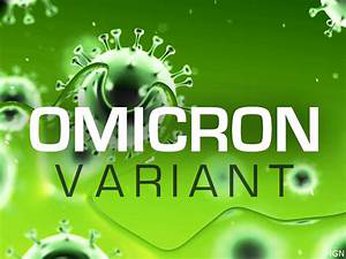About Stem cell therapy
Stem cell therapy is a type of regenerative medicine used to treat and study disease. It is used in cancer treatment and to reduce the risk of infection.1
American Cancer Society. How stem cell and bone marrow transplants are used to treat cancer.
Researchers are looking for other ways to use stem cells in medical therapies.
This article will cover stem cells, which conditions they treat, and their safety. It will also discuss stem cell therapy's side effects and risks.
What Are Stem Cells?
Stem cells are unspecialized cells in the body. They can develop into any cell and in some cases can renew themselves an unlimited amount of times.2
National Institutes of Health. Stem cell basics.
Stem cells are found in embryos and adult cells. There are two types of stem cells pluripotent and somatic.2
Pluripotent stem cells are embryonic stem cells or induced pluripotent stem cells. These cells can become any of the cells in the body. Somatic stem cells, also known as adult stem cells can form tissue or an entire organ.2
How Does Stem Cell Therapy Work?
Stem cell therapy is the use of stem cells as a treatment for a condition.
Stem cells are given to people to replace cells that have been destroyed or have died. In the case of people with cancer, they may be used to help the body regain the ability to produce stem cells after treatment.1
In people with multiple myeloma and certain types of leukemia, stem cell therapy is used to destroy cancer cells. This type of therapy is called graft-versus-cancer, the donor's white blood cells (WBCs) are used to destroy the cancerous tumor.1
What Can Stem Cell Therapy Treat?
Stem cell therapy is a newer treatment that is still being researched. As a result, the Food and Drug Administration (FDA) has only approved it for certain cancers and conditions that affect the blood and immune system.3
Conditions stem cell therapy is FDA-approved to treat are:4
It is also used to reduce the risk of infection after stem cell transplantation in people with blood cancers.5
Researchers are studying how stem cells can treat many other conditions than those listed above. There are stem cell clinical trials looking into using the therapy for neurodegenerative diseases like Parkinson's disease, Alzheimer's disease, multiple sclerosis (MS), and amyotrophic lateral sclerosis (ALS).6
Companies that claim to use stem cells to treat other conditions are doing so illegally. Products that claim to treat arthritis, joint pain, or fight the signs of aging are not FDA-approved.3
Centers for Disease Control and Prevention. Stem cell and exosome products.
Types of Stem Cell Therapy
During stem cell therapy, stem cells are given through an intravenous (IV) line in the vein. The three places where blood-forming stem cells can come from are bone marrow, the umbilical cord, and blood. The transplants can be:1
- Autologous: The stem cells are taken from the person who will be receiving the therapy.
- Allogeneic: The stem cells are donated by another person.
- Syngeneic: The stem cells come from an identical twin, if the person has one
Is Stem Cell Therapy Safe?
While stem cell therapy has many great benefits there are risks to the therapy.
One of the greatest risks is graft-versus-host disease (GVHD). It occurs in one-half to one-third of allogeneic transplant recipients. This is when the body does not recognize the donor's WBCs and attacks them. This can cause problems throughout the body. Treatment involves medications to suppress the immune system to stop the body from attacking the donor cells.1
Other potential risks to stem cell therapy include:7
- Hepatic veno-occlusive disease
- Cancer relapse
- New cancer
- Post-transplant lymphoproliferative disorder (PTLD)
What Is the Future of Stem Cell Therapy?
The future of stem cell therapy is bright. Researchers are constantly looking to find out how stem cells can treat certain conditions and find new ways to use stem cells to treat and cure many diseases.
Stem cell therapy has been researched for over twenty years to find treatments for conditions like macular degeneration, glaucoma, stroke, and Alzheimer's disease.8
National Institutes of Health. Putting stem cell-based therapies in context.
Summary
Stem cell therapy is a newer medical treatment that uses stem cells to treat conditions like cancer. Some clinics sell stem cell therapy without FDA approval and this places the patient at a higher risk for side effects and poor outcomes. Talk to a trusted healthcare provider about where to find a reliable stem cell therapy provider.
Source : Verywell Health
uses only high-quality sources, including peer-reviewed studies, to support the facts within our articles. Read our editorial process to learn more about how we fact-check and keep our content accurate, reliable, and trustworthy.
-
American Cancer Society. How stem cell and bone marrow transplants are used to treat cancer.
-
National Institutes of Health. Stem cell basics.
-
Centers for Disease Control and Prevention. Stem cell and exosome products.
-
National Cancer Institute. Stem cell transplants in cancer treatment.
-
U.S. Food & Drug Administration. FDA approves cell therapy for patients with blood cancers to reduce risk of infection following stem cell transplantation.
-
Aly RM. Current state of stem cell-based therapies: an overview. Stem Cell Investig. 2020;7:8. doi:10.21037/sci-2020-001
-
American Cancer Society. Stem cell or bone marrow transplant side effects.
-
National Institutes of Health. Putting stem cell-based therapies in context.









